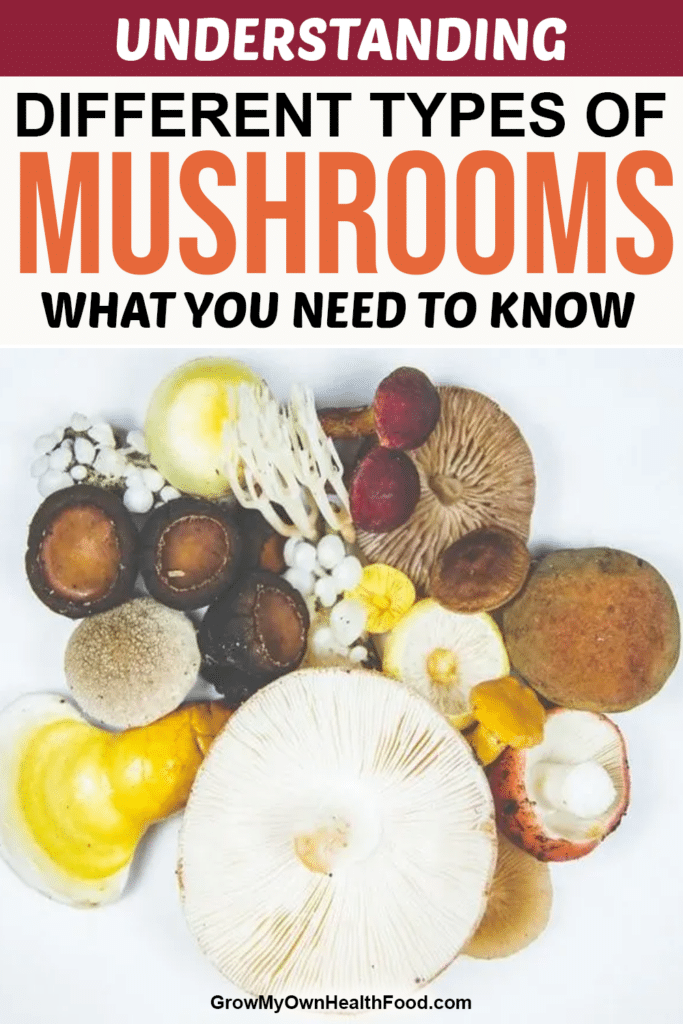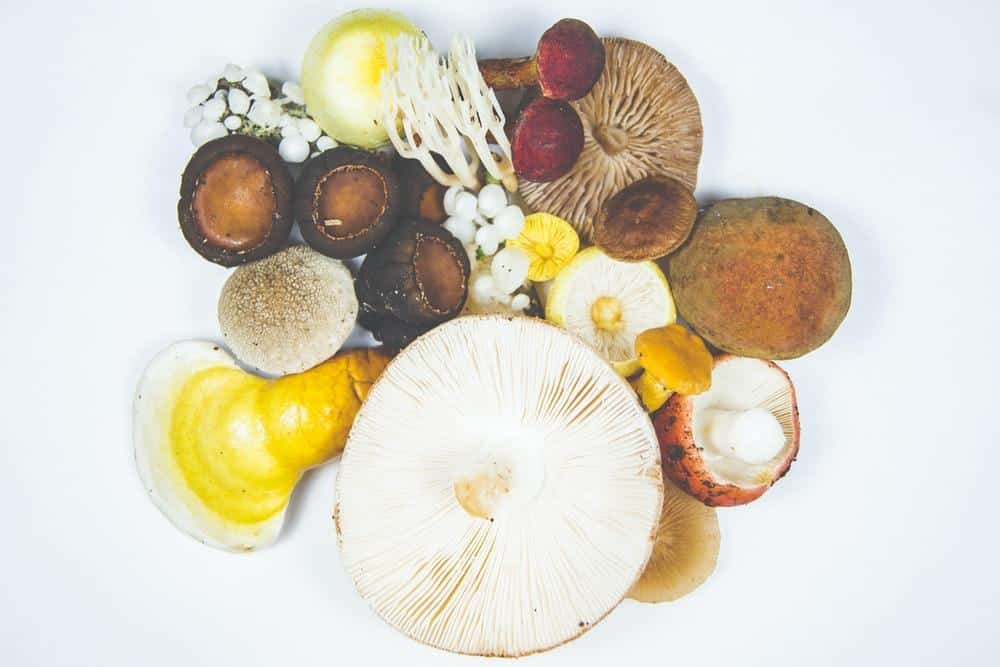Fungi can be a tricky food to look for. It’s known for its health benefits, is high in nutrients, and there are tons of mushrooms to choose from. For mushrooms that are easy for cooking, tossing into a soup, using as a meat substitute, and more, read on to find out about the different types of mushrooms and how to store and use them properly.
Mushrooms can be found anywhere, from grocery stores to marketplaces, and can be cultivated in farms or picked in the wild. They can bring a diverse taste to your dishes and offer a rich palette of flavor.
10 Different Types of Mushrooms
Button Mushroom
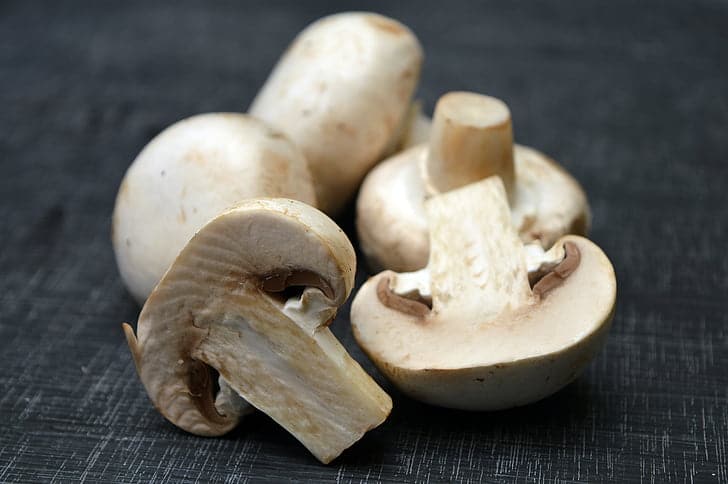
One of the most readily available and easy-to-grow mushrooms is the white button mushroom in the United States. It is one of the most cultivated varieties of mushroom in the world and full of healthy nutrients such as antioxidants, potassium, amino acids, vitamin D, riboflavin, phosphorus, zinc, folate and manganese.
You can purchase these mushrooms at almost any local grocery store year round in a variety of sizes and colors, ranging from white to brown. There’s a reason they are considered the most popular and easily accessible – you can use button mushrooms for baking, roasting, sautéing, grilling or stewing. They’re also safely enjoyed raw, if that’s your preference!
To store them, keep them in the container they came in and use them within the week to ensure they don’t dry out. With button mushrooms, like many others, you can keep them in the vegetable tray in your fridge if you want them cool or preserved a little longer. However, your fridge won’t increase their shelf life by much so be sure to use them not long after you’ve purchased. With mushrooms, like many vegetables, it’s always best to purchase the amount you want to cook within the next few days so they stay fresh. Avoid buying in bulk if you don’t plan on using them right away.
Portobello Mushroom
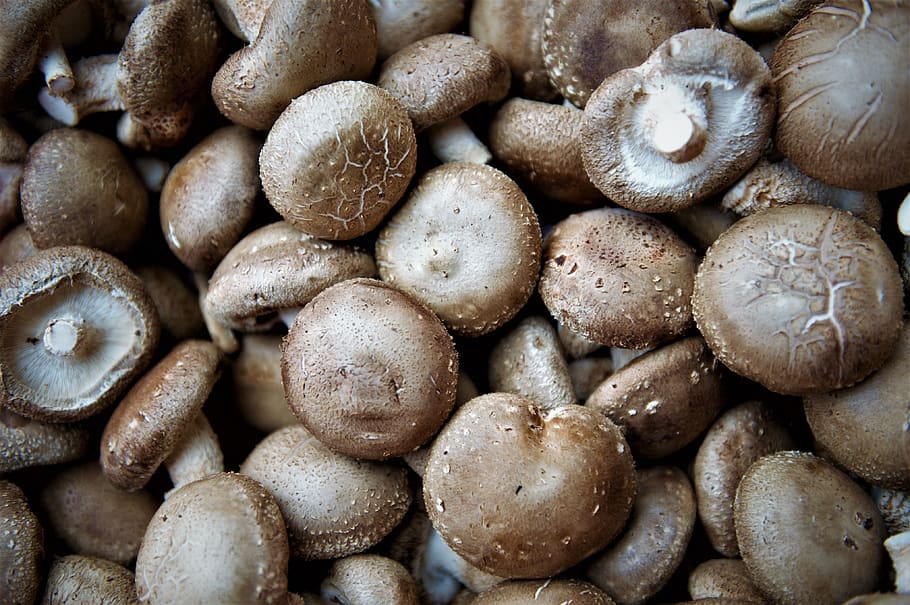
Also going by the name field mushroom or open cap mushroom, a portobello is a wide, larger mushroom about the size of your palm. They have a rich taste and are used to add a depth of flavor to cooking.
If you’re going for meatless options, there are also recipes for making portobello burgers and imitation steaks. They offer a juicy texture that is great for roasting and are a very popular alternative amongst vegans and vegetarians.
Portobello mushrooms can be found in your grocery store or marketplace. Look for brown gills on the inside-bottom of the mushroom for that great flavor. Store them in a cool, dry place.
Cremini Mushroom

Cremini mushrooms are an aged version of the button mushroom. They offer a firmer texture and brown shape and are a great addition to soups and stews.
Generally, a cremini mushroom can be used interchangeably with a button mushroom. They can typically be found in North American grocery stores and farmer’s markets, and are best kept cool and dry, usually in the refrigerator.
Shiitake Mushroom
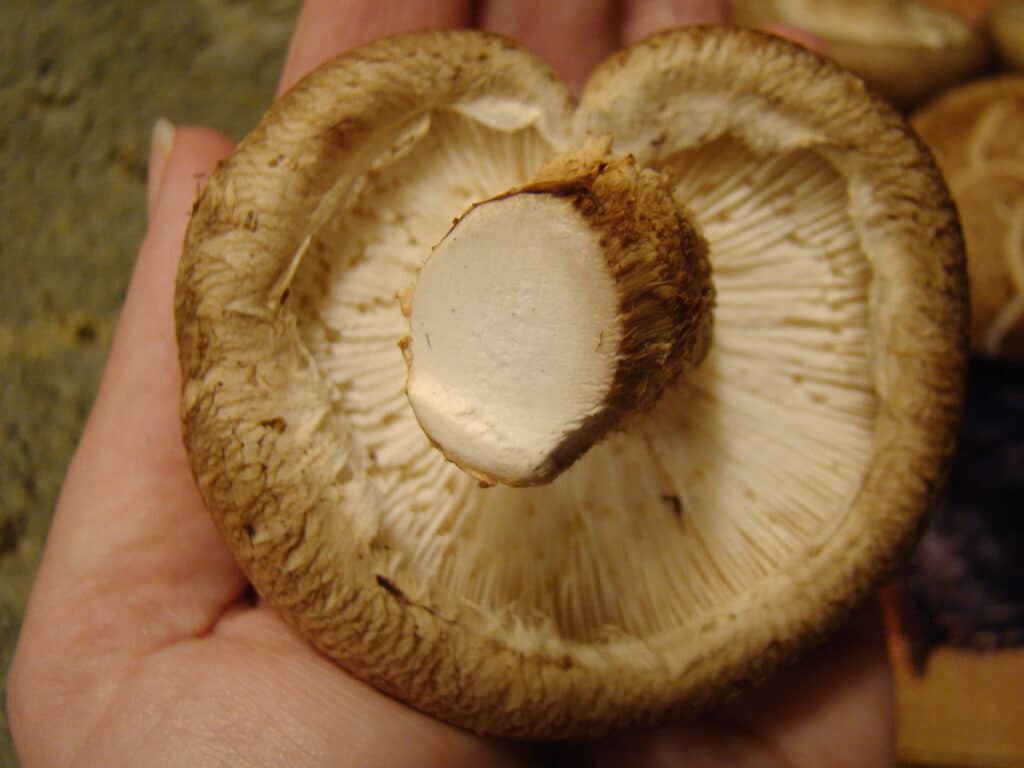
Shiitake mushrooms are found in farmer’s markets or grocery stores that carry produce from East Asia. This type of mushroom grows mainly in China, Japan and Korea, and is prevalent in each cuisine’s cooking.
A lot of shiitake mushrooms are cultivated and grown in other parts of the world. They’re great to cook with and offer a ton of savory, woodsy flavor.
Shiitake means ‘oak fungus’ in Japanese. These mushrooms can be found in the wild, and most are cultivated. They are identifiable by their umbrella-shaped brown caps that curl under slightly. A fresh shiitake mushroom will have a light and woodsy flavor and aroma. Dried shiitake mushrooms, on the other hand, may have a more intense smell and flavor.
Morel Mushroom
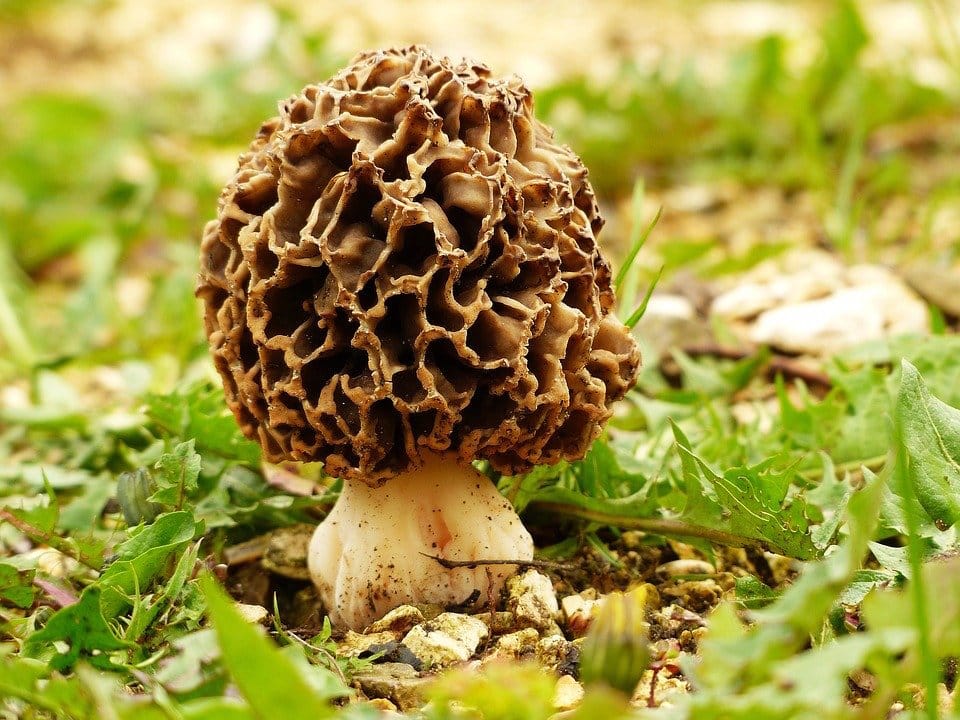
This mushroom is hard to find but can be worth it if you love mushrooms. They’re even recommended for people who don’t like mushrooms because of the sweeter, nuttier flavor they have.
A morel mushroom is popular in French cuisine and has a tough, honeycomb-like appearance that gives them a drier texture than other mushrooms.
Great British Chefs offers some advice on what to look for when purchasing morel mushrooms: “Due to the fact they have a short season and are difficult to cultivate, morels come with a bit of a price tag, but they are well worth treating yourself to, especially if you’re a fan of large different types of mushrooms. Choose firm, dry mushrooms; the smaller, younger ones are often a safer bet as they’ve had less time exposed to insects and soggy weather.”
Oyster Mushroom
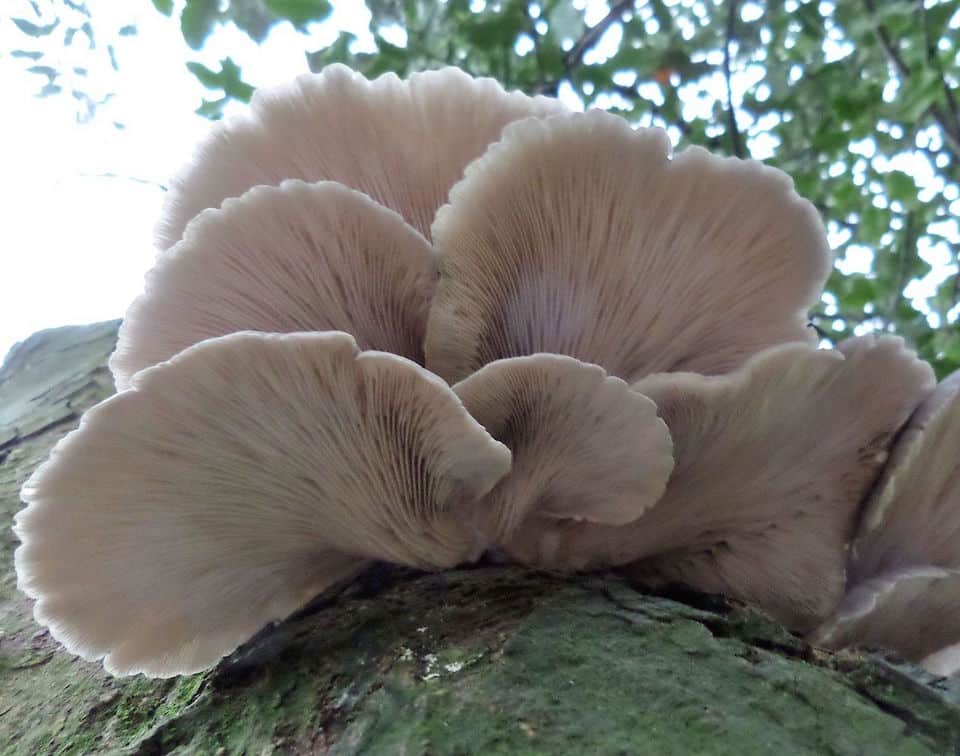
It’s likely you may have seen these mushrooms before, as they commonly grow on trees in the wild. However, not all wild oyster mushrooms are safe for eating, so if you’re looking for edible mushrooms, it’s best to visit your grocery store or farmer’s market.
They are very commonly found and easy to cook with, and can be cooked in a number of ways, from sautéing to adding in soups.
Chanterelle Mushroom
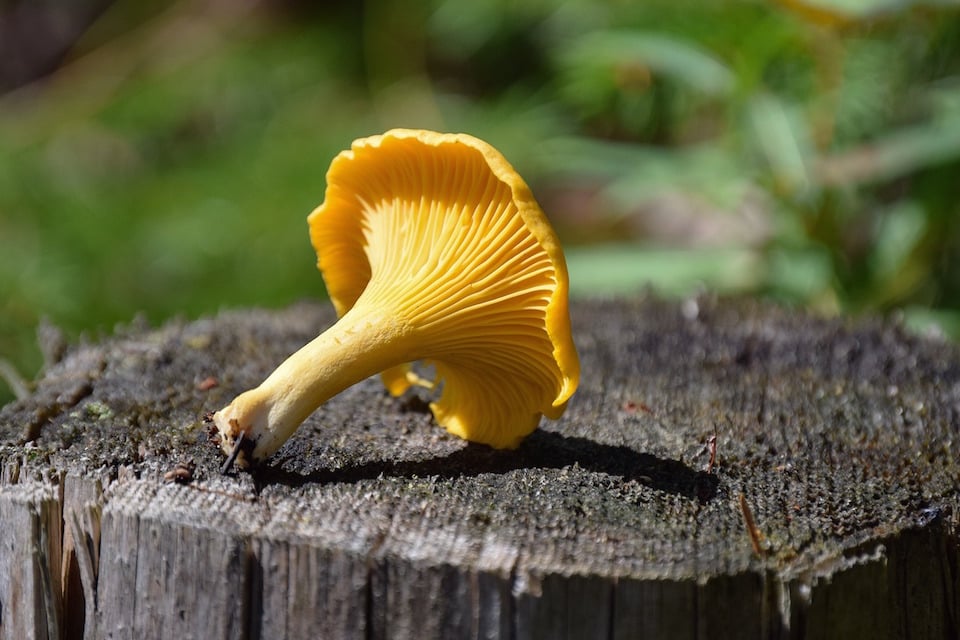
Known for their giant, fan-like shape, chanterelle mushrooms offer a fruity odor and an earthy taste. They can be a great main ingredient in a soup or stew. If you can’t resist eating them on their own, pan-fry or sauté some chanterelles with butter or cooking oil.
These different types of mushrooms are hard to grow and cultivate and are most commonly picked in the wild. They’re found in European cuisines, like Italian and French dishes, and are native to America.
An older chanterelle mushroom can take on a more metallic flavor. So, before cooking with these mushrooms, you want to try them raw. They only grow wild, so you can typically only find them for purchase at specialty markets and farmer markets.
It is not recommended to forage for chanterelle mushrooms yourself unless you have learned from an experienced mycologist or mushroom expert.
Clamshell Mushroom
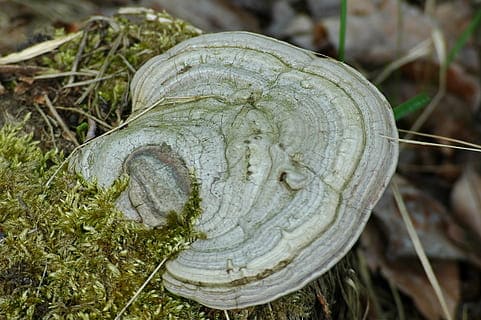
Also called beech mushrooms, clamshell mushrooms are crunchy when cooked and have a sweet nuttiness. When looking for them in a store or market, their appearance is small and clustered together in bunches.
They taste great raw but pull apart and cook them down to add as a garnish to any dish.
Enoki Mushroom
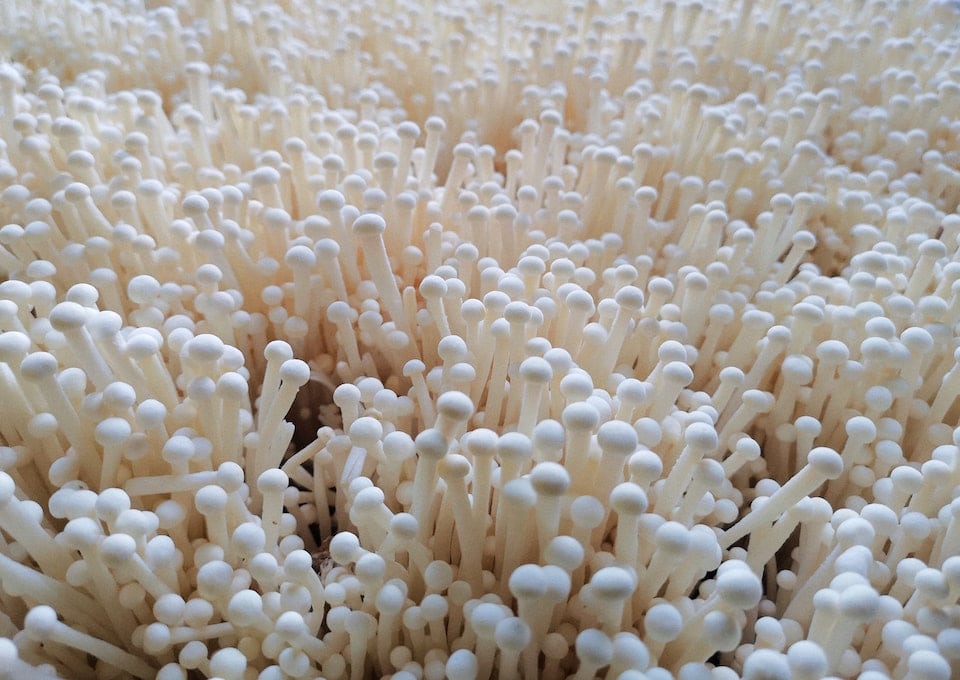
Enoki mushrooms are long, stem-like mushrooms that offer a crisp, bitter flavor, but are sweeter when cooked. They are common in Japanese cooking and go well in soups or salads.
Enoki is available fresh or canned and tastes great when consumed raw. When looking to buy enoki mushrooms, check for white and shiny caps. Browning on the enoki means it’s past ripe.
Raluca Cristian at So Delicious highlights the taste of enoki mushrooms: “They’re good raw and they’re common in Asian cooking. Because they’re crisp, they hold up well in soups and go well in salads, but you can also use them in other dishes.”
Lobster Mushroom

Commonly found in the western United States, a lobster mushroom is red on the outside and white on the inside. Their bright red appearance makes them hard to miss, and is actually named after their color, not the taste.
With a mild and nutty flavor, these can be cooked down for a delicious and juicy mushroom. They’re typically picked wild in the western parts of the U.S., so check your local farmer’s market if you live in that area or any imported sections where you shop for food.
There are so many different types of mushrooms to choose from. This gives you many options to choose from whether choosing mushrooms for medicinal purposes or for cooking.
